Xinhua News Agency, Lhasa, March 28th Title: Facing the spring breeze of the new era, work together to build a beautiful and happy Tibet — — A summary of the development achievements of the 64th anniversary of the liberation of millions of serfs in Tibet.
Xinhua news agency reporter
The sun shines brightly,
Eagle, spread your wings and fly
Spring scenery on the plateau is infinitely good,
How can I not sing … …
— — Turn over the serf and sing.
In the spring of Guimao, the grassland at the foot of Mount Everest began to turn green, the weeping willows beside the Lhasa River were put on new clothes, and the peach blossoms in Linzhi were brightly open.
In the midst of great vitality, the people of all ethnic groups on the snowy plateau have ushered in another anniversary of the liberation of millions of serfs in Tibet.
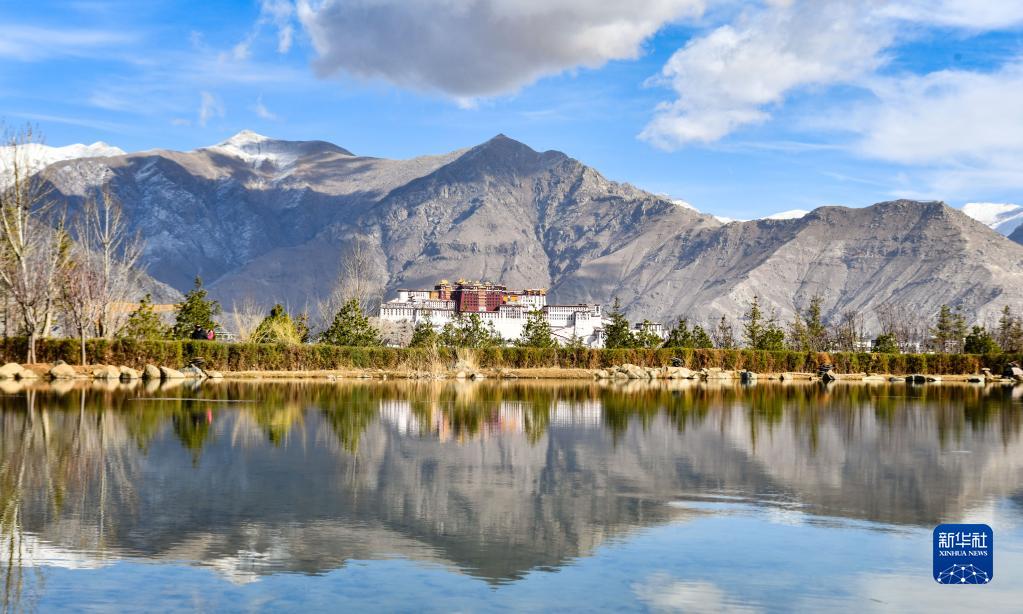
This is the Potala Palace in Lhasa, Tibet (photo taken on February 24th, 2023). Xinhua News Agency reporter Jin Meiduoji photo
On March 28th, 1959, under the leadership of the Communist Party of China, a democratic reform centered on abolishing the feudal serfdom with the integration of politics and religion was launched in Tibet. The snowy plateau bid farewell to the old system and entered a new historical era; Millions of serfs were completely liberated, became masters of their own destiny, realized their rights as human beings and enjoyed civil rights stipulated by law.
In’ 64, with a flick of a finger. From the towering Himalayas to the endless grassland in northern Tibet, from the rural areas in southeastern Tibet with valleys to the majestic sky of Ali, more than 3.6 million plateau children have built a United, prosperous, civilized, harmonious and beautiful socialist modern new Tibet under the strong leadership of the CPC Central Committee with the Supreme Leader as the core.
From bitter to sweet, the snowy plateau has changed the world
When the heavy land was plowed into deep furrows by agricultural machinery, 78-year-old Da Guojie’s wrinkled eyes smiled — — "This year is another good time."
Da Guojie’s home is located in Jiadui Village, Jiangre Township, Jiangzi County, Shigatse City. With the vigorous promotion of rural revitalization in recent years, the village has taken on a new look, with distinctive features of Tibetan new houses, smooth and open hardened village roads and complete public facilities.
"I grew up here and have deep feelings for the land. I plant seeds in the ground every year, and when the crops are ripe and turned into food, my heart is very practical. In old Tibet, everything that grew on this land had to pay taxes to serf owners, and it was too hard to live. " In memory, Da Guojie’s thoughts drifted back to the days when he was a serf.
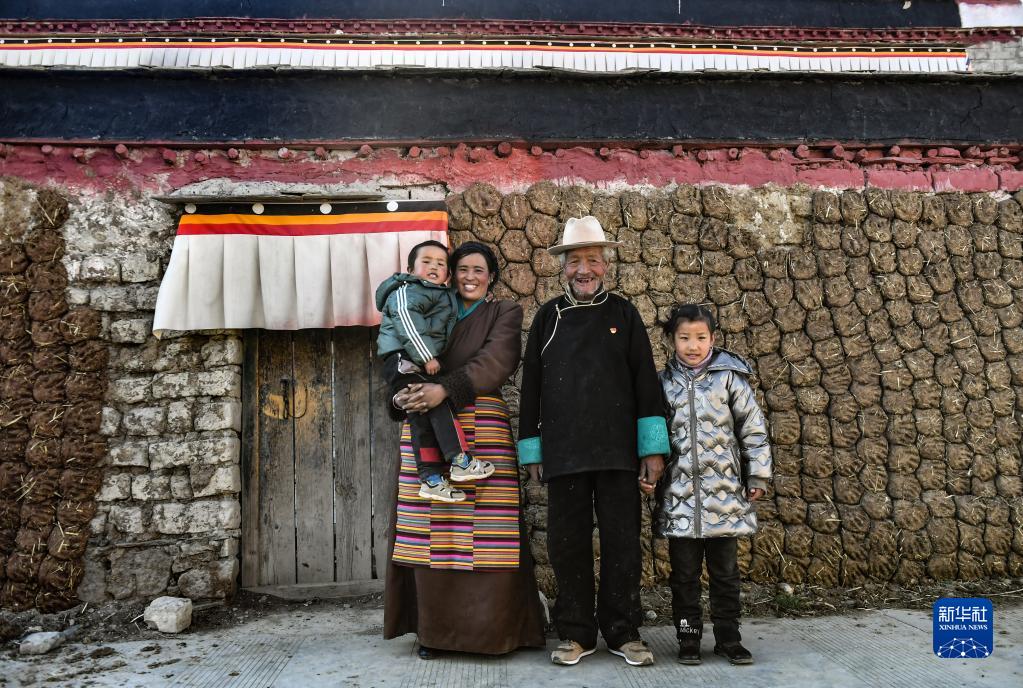
Da Guojie (second from right) and his family took a group photo in front of their home (photo taken on March 22, 2021). Xinhua News Agency reporter Sun Ruibo photo
The area around Jiadui Village was the manor of serf owners in old Tibet — — "Yapingkang Manor".
The serfs in old Tibet were divided into three types: poor, poor and prosperous. At that time, the "three lords" (officials, nobles and upper-class monks in monasteries), who accounted for less than 5% of the population, occupied almost all the wealth in Tibet, while serfs and slaves, who accounted for 95% of the population, struggled for life and death.
"Old Tibet was inhuman. At that time, the lords were even more cruel to serfs than to cattle." Da Guojie recalled. One autumn, the serfs collected highland barley for the Lord day and night, and 8-year-old Da Guojie was responsible for making tea for the overseer’s housekeeper. Because the water was not hot, the housekeeper picked up a stone and threw it at Da Guojie’s head. In an instant, he was bleeding profusely and fainted to the ground.
The beatings suffered by Da Guojie are deeply imprinted in his childhood memory, which is also a painful memory branded by the dark and cruel feudal serfdom to that generation.
"At that time, looking at the sky every night, I felt that we suffered more than the stars in the sky. When will this dark night end?" Da Guojie said.
In March 1959, the local government in Tibet and the upper reactionary groups launched an armed rebellion. The Communist Party of China (CPC) complied with the historical trend and people in Xizang’s desire to quell the rebellion and led the people of all ethnic groups to carry out democratic reforms, which sounded the death knell for the decadent serfdom.
In the same year, the Da Guojie family got 50 mu of land, 1 cow, 1 horse and 15 sheep. "With your own land, you are happy to work hard. In that year, we not only had enough food, but also sold the extra food, and truly realized the taste of being a human being. " Da Guojie said.
Democratic reform, the greatest and most profound social change in Tibet’s history, has cleared the gloom of the old society, opened up bright development prospects for Tibet, and also brought about the all-round liberation of people.
Since then, the snowy plateau has created a development miracle of "just a few decades, spanning thousands of years":
— — In 2022, the GDP of Tibet reached 213.264 billion yuan. In 1951, the GDP of Tibet was only 129 million yuan.
— — In 2022, the output of grain, vegetables, meat, eggs and milk in Tibet reached 1.07 million tons, 930,000 tons and 880,000 tons respectively, all hitting record highs. However, before the democratic reform, the vast number of serfs lived a life without food and clothing, and Tibet’s agriculture was still stuck in the primitive mode of production of extensive farming or even slash-and-burn cultivation.
— — In the new era, there are more than 35,000 deputies to people’s congresses at all levels and more than 8,000 CPPCC members in Tibet, 90% of whom are ethnic minorities. In old Tibet, "people are divided into grades, so the price of life is also high and low", "the price of life of the superior is as heavy as gold" and "the price of life of the inferior is a straw rope".
… …
Only after experiencing the severe winter can we cherish the warmth of spring; Only after experiencing darkness do we cherish the value of light.
Under the strong leadership of the Communist Party of China (CPC), Tibet regards improving people’s livelihood and rallying people’s hearts as the starting point and the end result of economic and social development. The social outlook is changing with each passing day, and people’s lives are thriving.
Hand in hand, create a beautiful new life together.
Walking into Barkhor Street in the old city of Lhasa, this old street with a history of more than 1,300 years, merchants of all ethnic groups from all over the world "live next to each other". In the residential compound around Barkhor Street, people unite and help each other to build a beautiful home.
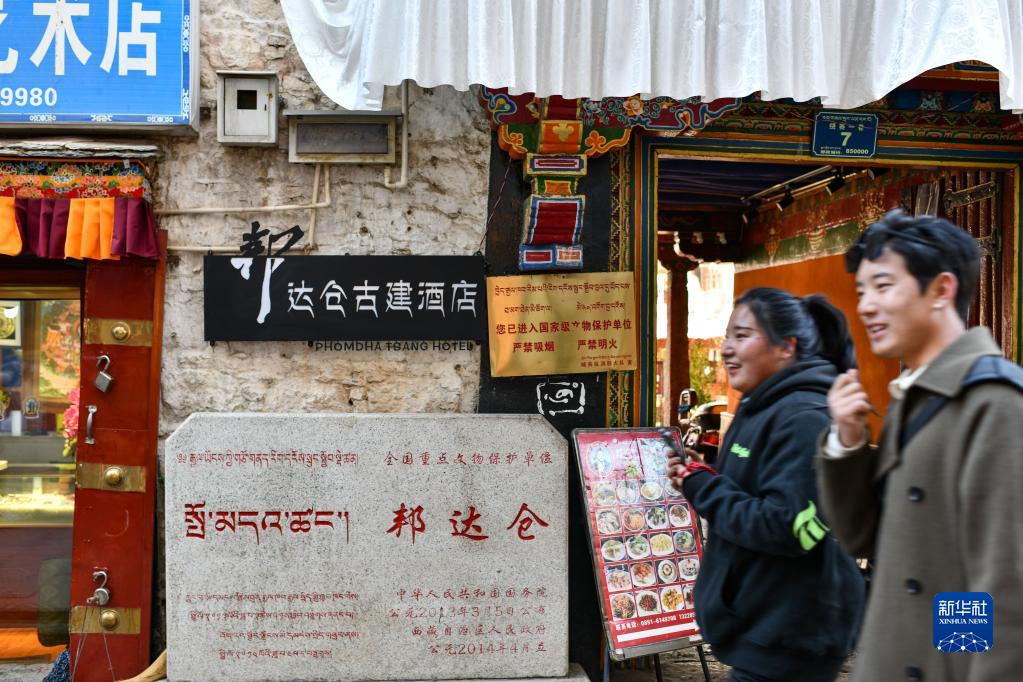
Residents of Lhasa, Tibet, walked past the Bangdacang Ancient Hotel in the old town of Barkhor Street (photo taken on March 24, 2023). Xinhua News Agency reporter Jin Meiduoji photo
People in Xizang loves national unity as much as he loves his own eyes, and extensively carries out national unity education and activities to create national unity and progress. The thought of "three inseparable" is deeply rooted in the hearts of the people, and the consciousness of "five identities" and "three consciousnesses" and the sense of the Chinese nation’s community are constantly firmly rooted, and all ethnic groups work together for common prosperity and development.
On May 1, 2020, the "Regulations on the Establishment of Model Areas for National Unity and Progress in Xizang Autonomous Region" was officially implemented, and Tibet became the first province in China to propose the establishment of model areas in the form of local legislation; In November 2021, the Tenth Party Congress in Xizang Autonomous Region proposed that Tibet should focus on creating a national model area for national unity and progress.
Linzhi in March, peach blossoms open.
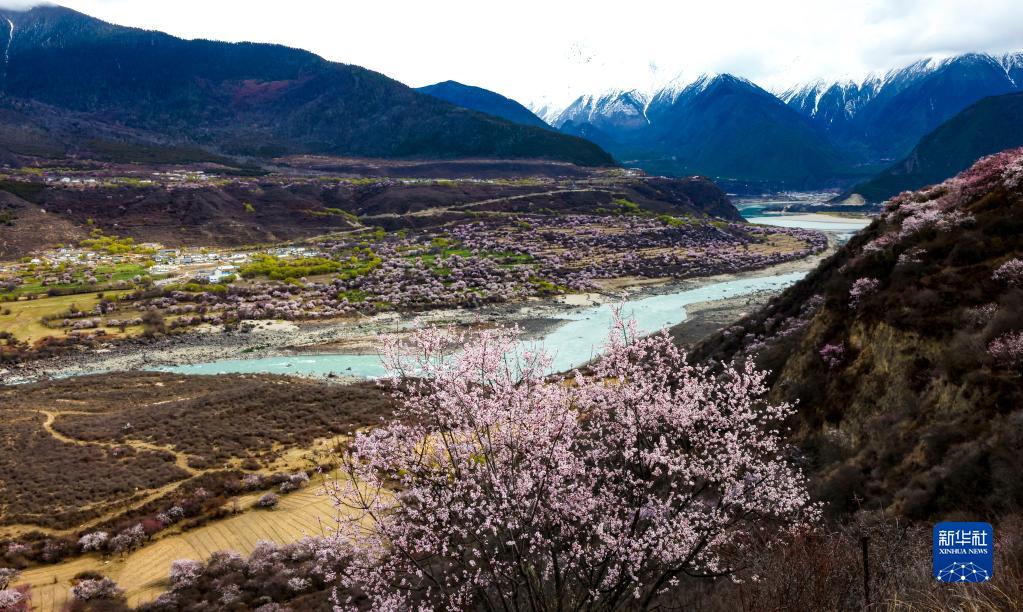
This is the peach blossom landscape at the entrance of Yarlung Zangbo Grand Canyon in Suosong Village, Milin County, Linzhi City, Tibet (photo taken on March 26th, 2023). Xinhua News Agency reporter Jiang Fanshe
Gadicom, a 66-year-old Menba villager, doesn’t have to be as busy as he was when he was young, and his monthly pension makes his life worry. Now relying on the village collective economy, she just got the first dividend of 5,000 yuan this year.
"The village collective economy pays dividends four times a year, and I can get thousands of dollars every time." Gadicom said that all this is inseparable from Huang Jiabin, the first secretary of the village.
In 2018, Huang Jiabin, a policeman from the Criminal Investigation Detachment of Linzhi City Public Security Bureau, volunteered to be a resident policeman in Green Village, Beibeng Township, Medog County, Linzhi City, and served as the first secretary of the village.
In order to maximize local villagers’ income by using local resources, Huang Jiabin opened up the working situation by opening night classes and establishing integral love supermarket, successively led villagers to plant Redmi and medicinal materials, open tea gardens, and explored the establishment of village-run enterprises to create red and ecological health-care tourism projects. Under his leadership, the collective income of Green Village increased from 5,000 yuan in 2017 to 1.2 million yuan in 2022, and the per capita income of villagers increased from 6,000 yuan in 2017 to 34,000 yuan in 2022.
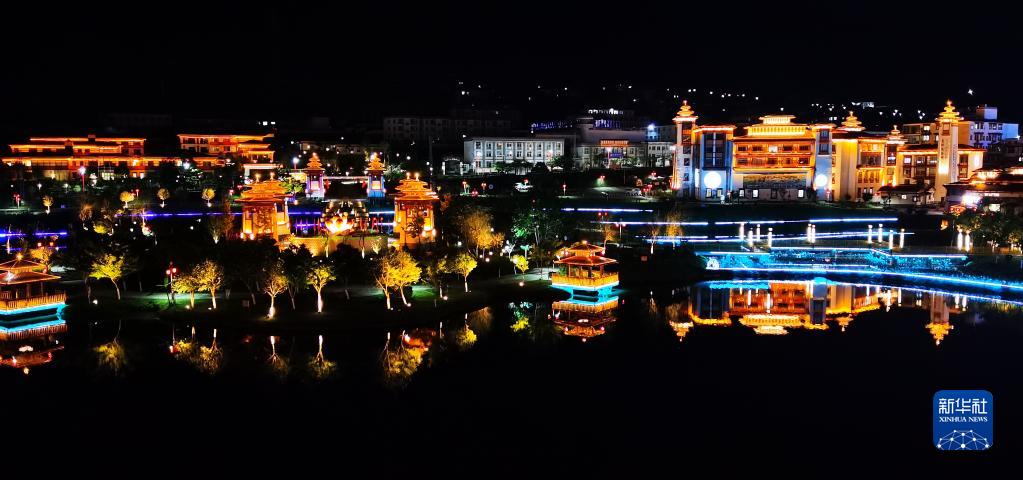
This is the night view of Medog County, Linzhi City, Tibet (photo taken on December 20, 2021, taken by mobile phone). Xinhua News Agency reporter Shen Hongbing photo
Carrying out counterpart aid to Tibet is an important way and channel to promote exchanges and exchanges among all ethnic groups. Since the 18th National Congress of the Communist Party of China, the central and state organs, ministries and commissions, counterpart supporting provinces and cities, and central enterprises have sent a large number of cadres and talents to aid Tibet, with the focus on building a sense of community of the Chinese nation, ensuring that every aid to Tibet is endowed with the significance of national unity and progress, improving people’s livelihood and rallying people’s hearts, which is conducive to enhancing the sense of acquisition, happiness and security of people of all ethnic groups.
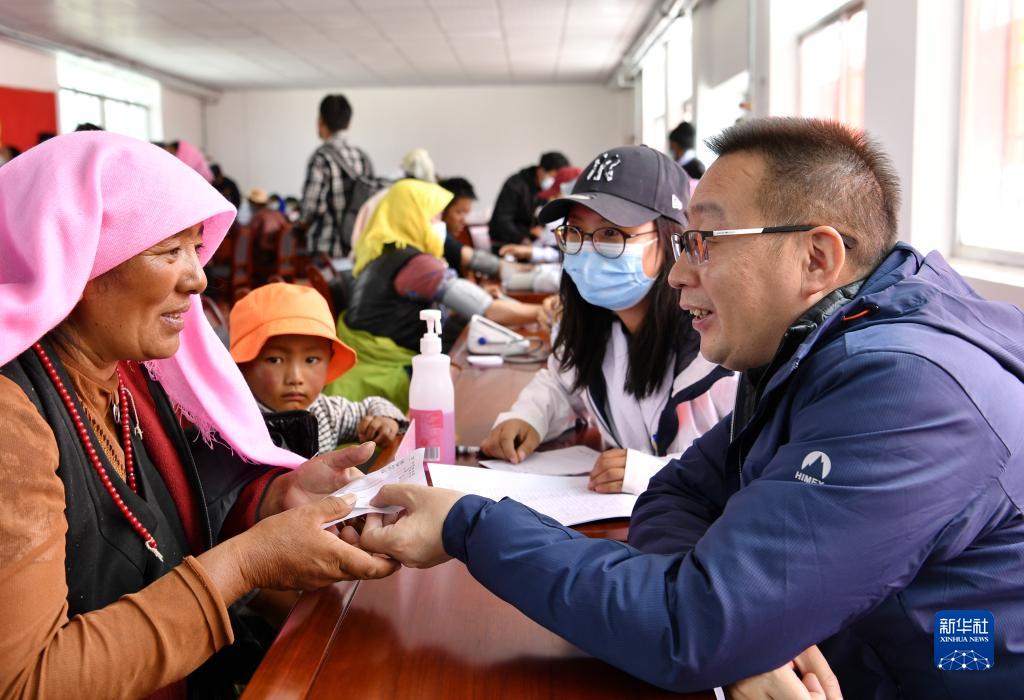
Wang Hongbing (right), an expert from the seventh batch of "group-type" medical teams in Beijing and vice president of Lhasa People’s Hospital, is a resident free clinic (photo taken on June 9, 2022). Xinhua News Agency reporter Zhang Yufeng photo
After graduating from Tibet Vocational and Technical College, the Tibetan boy Bianba Ciren chose to work in a livestock company in Hebei Province, relying on "employment to help Tibet". In just over a year, he was promoted to department head with excellent professional level and hard work spirit, and his monthly salary rose from 4,000 yuan to more than 10,000 yuan.
"Out of the plateau, let me increase my knowledge, vision and thinking have been greatly improved. My work and life in recent years have also made me more aware of the country’s emphasis on Tibet. " Bianba Tsering said.
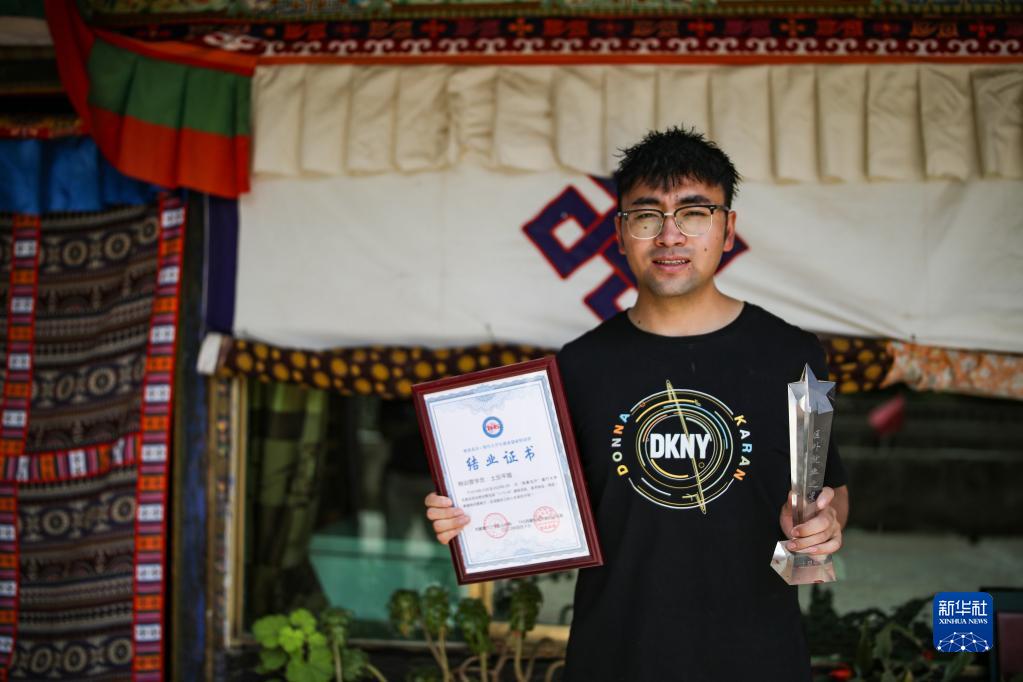
Tudan Pingcuo, a student of the "Gesang Huakai" special training camp for college students’ employment and entrepreneurship, and the business manager of Gansu-Qinghai-Tibet Region of Jiangsu Jinshiyuan Wine Co., Ltd., presented the certificate of completion of the special training camp and the trophy of "Employment Star Outside the Region" (photo taken on June 23, 2022). Xinhua News Agency reporter Jiang Fanshe
The flower of national unity is in full bloom in every corner of the snowy plateau and also in the north and south of the motherland.
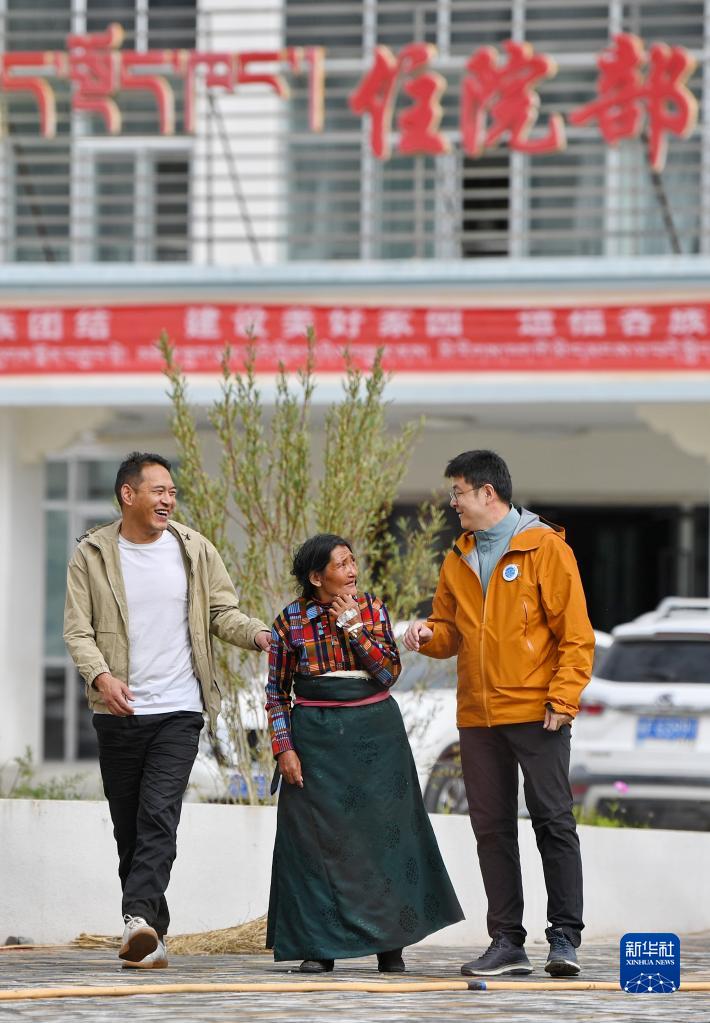
In Ali People’s Hospital, Wang Keming (right), a doctor from the Plastic Surgery Hospital of China Academy of Medical Sciences, and Danzeng Nianzha (left), a doctor from Xizang Autonomous Region People’s Hospital, accompanied Baji, a herder who was about to undergo surgery, for a relaxing walk (photo taken on July 31, 2022). Xinhua News Agency reporter Zhang Yufeng photo
Determined to move forward, the party’s general plan for Tibet in the new era leads Tibet’s modernization
In the verdant Yarlung Zangbo River valley, the brand-new Fuxing train roared past.
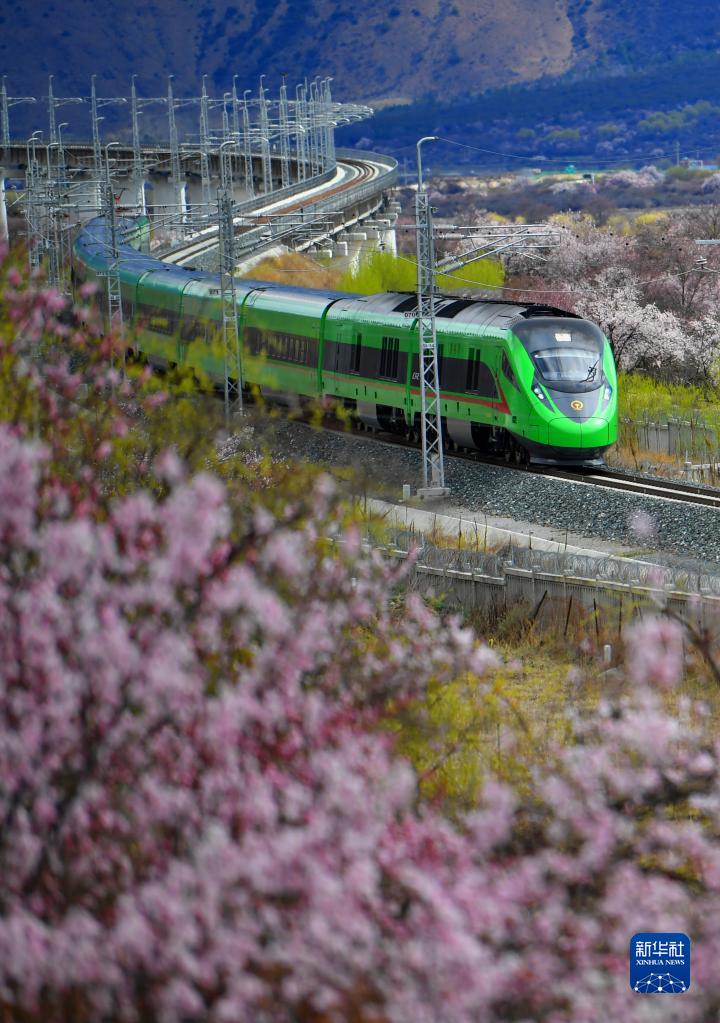
Fuxing passed through the peach blossom room in Linzhi section of Lalin Railway in Tibet (photo taken on March 21, 2023). Xinhua News Agency reporter Jue Guo photo
Observing the development of Tibet, the most intuitive thing is road traffic construction.
The roof of the world, with its high mountains and deep valleys, complex geology, high cold and lack of oxygen, was once described as "a place where only Tibetan eagles can fly".
Over the past ten years, Tibet’s transportation network has accelerated: Lari Railway and Lalin Railway have been completed and opened to traffic, and sichuan-tibet railway is stepping up construction. At present, the mileage of Tibet’s railways is nearly 1,400 kilometers. By the end of 2022, the total mileage of highways in Tibet had reached 121,400 kilometers, and the smooth rate of hardened roads in towns and villages had reached 95%, and the passenger traffic rate had reached 90.5%.
Behind the miracle of traffic construction is the all-round development of Tibet’s economy and society since the 18th National Congress of the Communist Party of China, which reflects the ideological and practical power of the Party’s strategy of governing Tibet in the new era.
In March 2013, when attending the deliberation of the Tibet delegation at the First Session of the 12th National People’s Congress, the General Secretary of the Supreme Leader clearly put forward the important exposition that "governing the country must govern the border, and governing the border should first stabilize Tibet", emphasizing the special position of Tibet’s work in border governance and state governance.
In August, 2020, General Secretary of the Supreme Leader further enriched and developed the Party’s strategy of managing Tibet, and clearly put forward the Party’s strategy of managing Tibet in the new era of "Ten Musts".
The new era is the period when Tibet has the best development, the biggest changes and the most benefits for the people — — The average annual economic growth rate ranks among the top in the country, the per capita disposable income growth rate of rural residents ranks first in the country for many years in a row, and the urbanization rate has steadily increased.
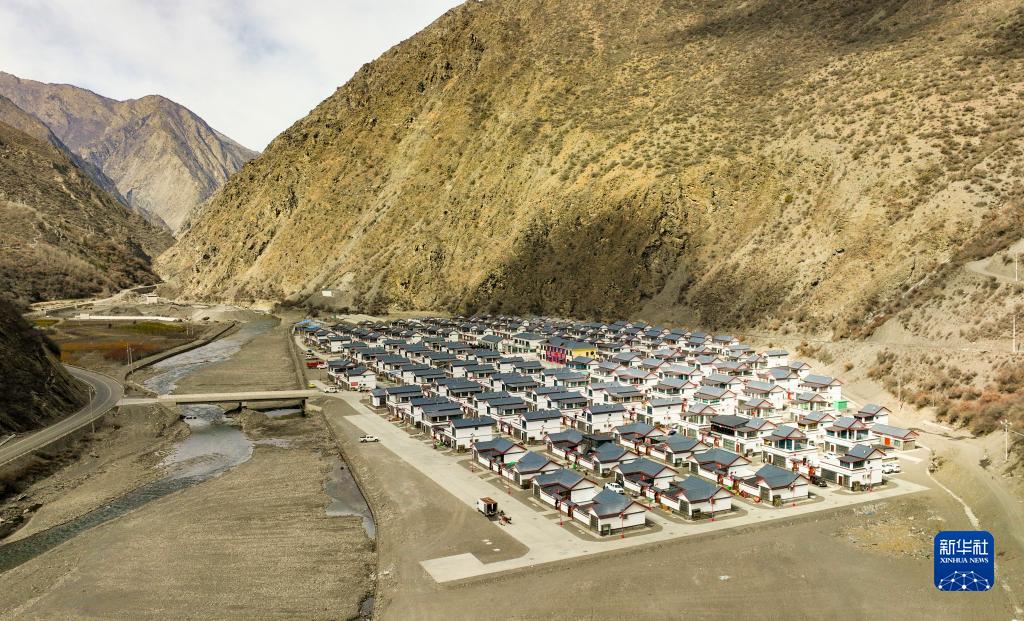
This is the relocation and resettlement site of Douyu Luoba Ethnic Township in Longzi County, Shannan, Tibet (photo taken on February 15, 2023, photo of drone). Xinhua News Agency reporter Jin Meiduoji photo
Practice has proved that the principles and policies of the CPC Central Committee on Tibet’s work are completely correct. In the new era, the Party’s strategy of governing Tibet has brought solid certainty to Tibet’s long-term stability and high-quality development.
People’s livelihood is no small matter, and branches and leaves are always related to love. The emergence of a new type of pressure cooker proves that Tibet really does its work in the hearts of ordinary people.
"The meat cooked in this pot is soft and delicious." Zeng CuO, a herdsman in Nierong County, Tibet, took out a piece of yak meat from the pressure cooker and told reporters while eating it.
Because of Tibet’s high altitude, low air pressure and low boiling point, even if the fire is strong, the water temperature is only over 80 degrees Celsius, so a pressure cooker suitable for plateau is a necessary cooking utensil for the masses.
In order to better meet the needs of the masses, developing and popularizing multifunctional cookers suitable for plateau areas has become a livelihood project in Tibet. Guo Xiang, director of the Department of Economy and Information Technology of Xizang Autonomous Region, said that Tibet’s modern cooker industry system has effectively improved the quality of life of people of all ethnic groups on the plateau.
Tan Zheli, a senior researcher at the Mbeki Institute of African Leadership at the University of South Africa, said that the people-centered development thought has enabled Tibet to achieve tremendous economic and social development and greatly improve people’s living standards. The China government has formulated policies that are in line with reality. Today, people in Xizang is rich in material and spiritual resources.
Bian Qiong, a citizen of Shigatse, is over 70 years old, and his favorite thing to do in spring is to bask in the sun with his grandson.
"communist party’s kindness to the people is tangible, and the new socialist Tibet is the most popular." Talking about life now, Bian Qiong gave a thumbs-up. "As a former serf, I went from winter to spring. And our children have been living in spring since birth. " (Reporter Shen Hongbing, Rob Tsering, Zhai Yongguan, Chen Shangcai; Participating in writing: Wang Zehao, Li Jian, Ge Sang Bianjue)
关于作者